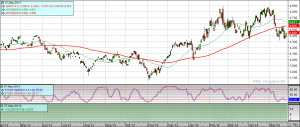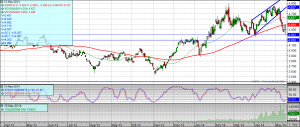If you’re a retail supplier whose livelihood is under attack because of uncompetitive pricing in the broken wholesale electric market, here’s some salt for that wound.
Merchant generators have evaluated the polar vortex event and have come to the conclusion that wholesale electric prices were too low.
Specifically, EPSA, in advance of an April Fool’s Day technical conference at FERC, whose panels include zero representatives from independent competitive retail suppliers, released a report on the polar vortex, which concluded that the “efficiency” of the wholesale markets can be improved.
This is code for higher prices, particularly higher clearing prices in the energy market which can be enjoyed by all generators, not only specific units.
Specifically, EPSA’s report claims that current wholesale market “flaws” include the $1,000 price cap, and out-of-market (read out-of-LMP) resource compensation (a source of uplift). Not surprisingly, EPSA’s report doesn’t delve into the real flaw of the wholesale market — a 40% forced outage rate during the height of the polar vortex, despite such capacity being obligated to be available through the capacity market.
Indeed, EPSA’s paper essentially strips all value from the capacity product forced to be procured by customers, by essentially stating that the capacity market will not ensure units are available.
To wit, EPSA’s paper says that the “outdated” $1,000/MWh price cap must be raised, because otherwise units are not properly incented to be available. The fact that PJM load is compelled to compensate an amount of capacity equal to a reserve margin well in excess of forecast peak demand, in exchange for such units being available when needed, apparently provides no incentive for such capacity to actually be available, which begs the question of why load is compelled to pay for such capacity.
Specifically, EPSA’s paper says: “By revealing to sellers the actual value of energy production [by lifting the $1,000 cap], sellers are provided the best incentives to be available, to operate reliably, and to enter into forward market sales contracts … For example, electricity spot market prices that are allowed [to] reflect high marginal cost supply provide market sellers assurance that their costs will be covered by spot market prices and more efficiently guide firm fuel procurement decisions such as day-ahead and intra-day gas purchases and oil supply restock decisions. In addition, reducing seller uncertainty regarding receipt of adequate compensation for providing electricity will improve seller creditworthiness and ensure that fuel supply can be readily purchased when prices are volatile. Accurate price signals will also provide sellers stronger performance incentives and provide more effective signals for longer-term investment decisions, including the value of fuel stocks and dual-fuel capability. Moreover, efficient prices are an important signal as to where, when, and how much new capacity may be economical. Higher prices often indicate that the introduction of newer, more efficient resources is likely to be profitable. Existing resources facing accurate prices can make better ongoing operational and capital investment decisions.”
We have no quarrel with this argument for units without a capacity obligation, and in an energy-only market, we wholly support allowing generators to reflect actual marginal cost (plus fixed costs) in their uncapped bids. These units without a capacity obligation may enter and exit the market freely, and have no obligation to stand ready, so we understand the need for spot market pricing to provide proper incentives.
However, under PJM’s market design (per design), units without a capacity obligation are not needed to maintain reliability (and indeed, such units should not be expected to be on the grid, since the argument is that generators will retire without the capacity subsidy). We note that despite this design, the capacity market is not actually providing reliability, but that is a separate matter.
In any case, for units which have a capacity obligation in PJM, the spot market should not be required to incent generators to undertake any of the behavior described above, including but not limited to fuel procurement decisions, dual-fuel capability, etc.
Units with a capacity obligation have already committed to offer into the day-ahead market. They do not need to be “incented” to do so. Arranging appropriate fuel supplies is simply part of their obligation to offer into the day-ahead market.
The fact that these units with a capacity obligation need to be paid extra money through LMPs just to be available shows the complete lack of value provided to customers through their mandatory capacity payments.
As to EPSA’s second point, we do not disagree with the need to reduce uplift payments. However, EPSA appears more concerned with reflecting the underlying costs of uplift in LMPs (so the wealth can be shared by all generators), rather than addressing the root cause of uplift and reducing uplift payments by tackling the actual problems, not just shifting money from one pot to another.
Copyright 2010-13 EnergyChoiceMatters.com
Reporting by Paul Ring • ring@energychoicematters.com



